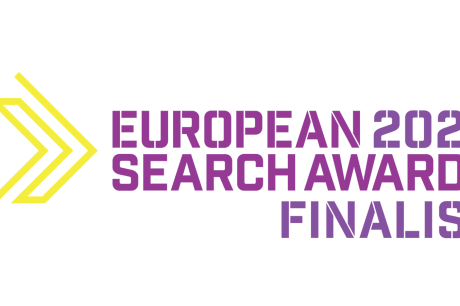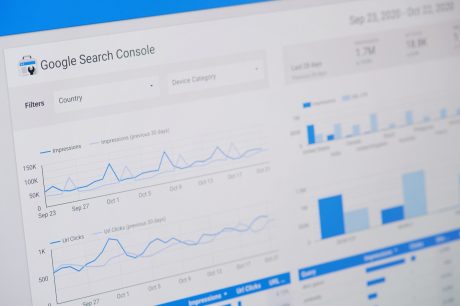How to use ChatGPT in SEO?
GPT Chat uses one of the latest and most powerful language models developed by OpenAI (GPT-3). Its usage in SEO allows for automation and improvements related to content creation.

From the article, you will learn how to use the capabilities of ChatGPT to improve your site’s visibility in search engines, the benefits of using this tool, and its limitations. We will also provide examples of how ChatGPT is used in practice and tips on how to effectively use its capabilities in the process of optimizing your site.
Table of Contents
- Generate topics for an article on a given topic
- Generate an introduction to the article
- Provide a list of subheadings for an article on a given topic
- Rewrite the text into a unique
- Generate a list of keywords to use in the text on a given topic
- Generate an article summary
- Generate comments on an article
- Generate a list of “entities” keywords used in the article
- Translate texts
- Make text-related operations, such as shortening sentences
- Change sentences from active to the passive side
- Generate product descriptions based on product data
- Create and optimize title, description, and h1 metatags
- Take advantage of ChatGPT in Google Spreadsheet
- Check the sentiment of the text
- Generate images for blog posts
- Limitations of ChatGPT
Generate topics for an article on a given topic
ChatGPT can generate topics for an article when given a keyword or phrase. Topics can be generated in a formal, informal, or clickbait style, for example. The DiagnoSEO (headline generator) tool uses OpenAI technology and generates a list of topics in several different versions – from formal to clickbait or humorous – in one go.
Generate an introduction to the article
ChatGPT can generate the introduction of an article on a given topic. You can use the generated introduction in the DiagnoSEO tool (content editor). A checkpoint that checks the length of the introduction can be helpful to then shorten the introduction to, for example, conform to CMS requirements or standards followed on your site (the recommended length of the introduction is often a maximum of 30 words).
Provide a list of subheadings for an article on a given topic
ChatGPT will easily generate a list of sub-headings for an article on a given topic. For each sub-heading, you can then generate a list of related words and ask the chat to generate text on the set topic using the given keywords. You can use the generated list in DiagnoSEO tool (content editor). A checkpoint that checks the length of sub-headings can be useful to easily discover sub-headings that are too long and shorten them.
Rewrite the text into a unique
ChatGPT can rewrite the given text into a unique one. DiagnoSEO tool (article rewriter) allows you to easily paste the text to be rewritten in the text box. After clicking on the button, the rewritten and unique text is ready after a while.
In the old days of SEO, content spinners (so-called “mixers”) based on simply replacing selected words with synonyms were popular. The use of AI is a significant step forward in this field, as AI can completely rebuild sentences while keeping the same message, and there is no need to waste time on providing synonyms.
Generate a list of keywords to use in the text on a given topic
The ChatGPT can generate a list of keywords to use so that the text describes the topic comprehensively. It works similarly to the TF IDF tool based on Google’s top 10 results but is more precise. The keywords or phrases are well-selected, do not contain stop words, and include both single words and phrases. The DiagnoSEO content tool uses both TF IDF and solutions from OpenAI to generate keywords to use in the text on a given topic.
Generate an article summary
ChatGPT can generate a summary for an article. You can also generate a summary for an article directly in DiagnoSEO content tool, which uses Open AI.
Generate comments on an article
ChatGPT can generate comments on an article when given a keyword or phrase. Comments can be generated in a formal, informal, or humorous style, for example. The DiagnoSEO tool (comment generator) uses OpenAI technology and generates comments in several different versions at once – from formal to clickbait or humorous. You can also specify what tone you want the generated comments to have (positive, negative, or neutral).
Generate a list of “entities” keywords used in the article
ChatGPT can quickly analyze an article and return a list of the most important keywords occurring the the article. The DiagnoSEO tool for extracting keywords from an article can do the same. How this can be used for SEO? Well, you can create a list of words or phrases and assign URLs to them. The keywords in the texts in the p tags can then be turned into links, which will improve internal linking. Pages will be linked to each other through semantic internal linking.
Translate texts
ChatGPT supports and has been tested on nearly 100 languages (data as of January 2023). Translations created by ChatGPT are as good as those created by DeepL or Google Translate. With DiagnoSEO Translate tool, which uses OpenAI technology, you can not only translate text, but also export it to a CSV file. Each new line is exported as a new record, which can be useful, for example, when translating online store categories or metadata.
Make text-related operations, such as shortening sentences
ChatGPT can, for example, split one long sentence into two shorter ones. What can this be useful for SEO? According to research, as the number of words in a sentence increases – the sentence becomes more difficult to read. Friendly texts mean more satisfied users, better site experience, lower bounce rate, etc. It is recommended not to exceed 20 words per sentence. A sentence in the text that is too long can be easily found with DiagnoSEO content tool and corrected automatically using artificial intelligence.
Change sentences from active to the passive side
As is widely known, in texts it is better to avoid the passive side and write in the active side. This makes texts easier to read. ChatGPT can rewrite a sentence from the passive to the active side.
DiagnoSEO content tool also has artificial intelligence algorithms implemented and can detect and highlight sentences with the passive side. Then, with one click, you can automatically correct the sentences. This will, of course, be done for us by artificial intelligence from OpenAI.
Generate product descriptions based on product data
If you have an online store and have basic information (technical data) about each product then you can generate a short unique description for each product. Of course, querying the ChatGPT tool for each product can be cumbersome, so it’s better to use the DiagnoSEO tool (product description generator). With this, you can easily generate descriptions for hundreds or thousands of products. The tool allows you to import product data from a CSV file and export it to a CSV file.
Create and optimize title, description, and h1 metatags
ChatGPT can generate title, meta description, and h1 content. However, ChatGPT does not work perfectly in this regard. The content of the generated metadata may not meet the length standards.
Therefore, it is important to check the title and description metadata in the DiagnoSEO Snippet Preview tool. The tool will point out optimization errors. In the Pro version, the tool can also automatically create metadata or optimize it using all SEO best practices and artificial intelligence provided by OpenAI (the most advanced Davinci model).
Take advantage of ChatGPT in Google Spreadsheet
With DiagnoSEO, it is possible to combine the capabilities of ChatGPT with Google Spreadsheet. In the Enterprise version, DiagnoSEO provides a feature that allows you to easily use artificial intelligence in Google Spreadsheet for hundreds or thousands of records.
Check the sentiment of the text
ChatGPT can determine whether the text has positive, neutral, or negative sentiment How to apply this to SEO? With this, you can, for example, analyze content from the top 10 pages for a given query and determine their sentiments. If you find that all pages describe, for example, a product in a positive way then it is better to do so in the new text as well.
To quickly and easily analyze the tone of the texts from the pages from the top 10 results you can use the DiagnoSEO (Competitors Analysis) tool. When you enter a keyword, the tool returns a table of data. The tool uses OpenAI, among others, and also examines many other SEO ranking factors.
Generate images for blog posts
Blog posts with images rank better. Especially when a keyword is used in the alt tag, and the image further enhances the user experience and gives added value to the article. ChatGPT (for the moment) does not generate images. The DiagnoSEO tool (image generator) uses Open AI technology and can generate images on a given topic and of a given size.
Limitations of ChatGPT
- At the moment (January 2023) ChatGPT does not do well in determining the length of texts by which the generated metatags (mainly meta description) may be too long.
- Some of the sentences generated are not entirely stylistically correct and some of the content may not be truthful.
- Not all indicated keywords can be used in the content of the generated text.
- Sentences and paragraphs created by AI do not always meet friendly text standards.
These limitations mean that before publishing AI-generated content, it should be thoroughly checked for errors (incorrect facts, stylistic errors, whether it has the indicated length and contains all related keywords). In order to easily and quickly check and edit the text, it is best to use the DiagnoSEO Content tool. This tool will automatically point out errors related to readability, SEO, length, and use of relevant words.



March 14, 2023 at 11:15 am |
The part about generating product descriptions caught my eye since I’m in e-commerce. It sounds super efficient!
April 14, 2024 at 11:44 am |
It seems like there’s still some work needed to make sure everything’s polished and accurate. It’s like AI is a powerful assistant, but you still gotta give things a once-over.
December 13, 2024 at 8:12 am |
It’s fascinating to see how AI tools are evolving to make our lives easier.